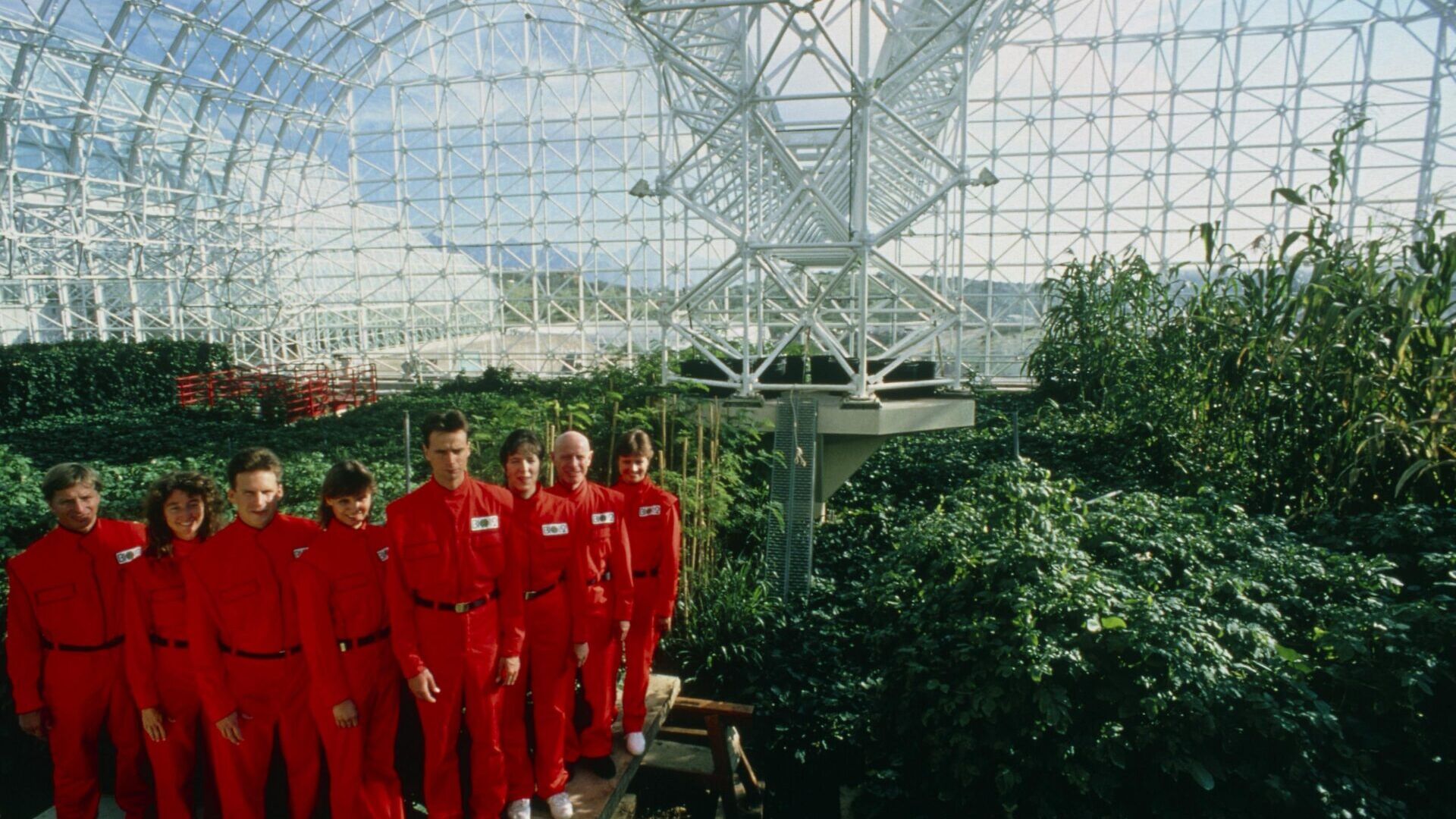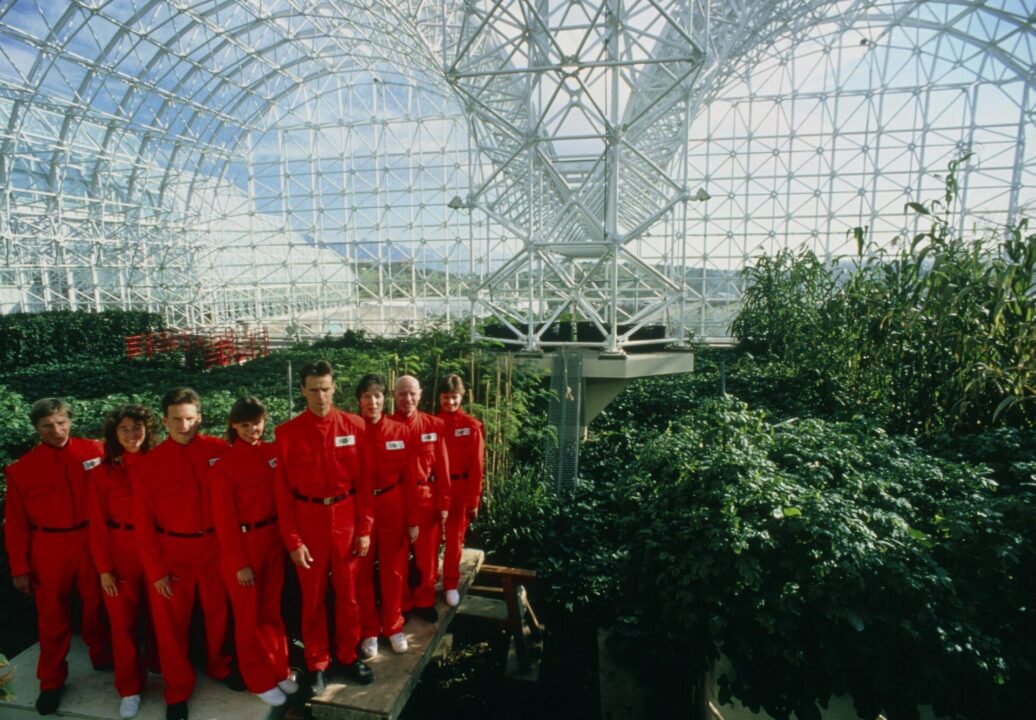In 1991, eight biospherians made a commitment to live in a large, self-sustained terrarium for two years.
Located in Oracle, Arizona, the futuristic-looking dome was created as a prototype for colonies to live in space; should Earth become uninhabitable for any number of reasons, this experiment would either confirm or deny humans’ ability for survival on another planet. In Matt Wolf’s documentary Spaceship Earth, we are given an insider’s look into this wild project that was created by scientific pioneers, brave humanitarians, and zany artists, and which ultimately fell into the hands of Steve Bannon. But that’s another story.
At the intersection of Art and Science is a man named John Allen aka Johnny Dolphin. The San Francisco-dwelling artist is portrayed as a charismatic genius who easily could befriend other like-minded bohemians. After John and his newly-formed community of outsiders decided to form a theatre troupe as an outlet for creative expression, John shifted his focus from public performances to visionary science. Concerned with the effects of climate change, and with the support of his troupe, John created the Biosphere 2. His idea was to replicate Earth’s natural biosphere that would incorporate all atmospheres inside of a dome: a man-made rainforest, an ocean with living coral reef, and a desert, all curated with specific animals and plants to populate it. In theory, it was genius. But like all good sci-fi stories, things didn’t go according to plan.
Spaceship Earth plays like a love child between Claire Denis’s sci-fi drama High Life and the sensational cult series Wild Wild Country, with a little inspiration of Biggest Little Farm mixed in. Supporters viewed Biosphere 2 as the search for the truth. Critics viewed it as trendy ecological entertainment, complete with matching red jumpsuits that looked like they came straight off of a Hollywood set. Rumors of John’s cult-like behavior is a fascinating theme throughout the film, and while nothing is ever proven, if it actually was a cult, it was at the very least a force for good. In addition to the astonishing story, the archival video content and incredible time-lapse footage are breathtaking.
Watching Spaceship Earth in these times feels a bit ironic. I found myself thinking, why would anyone willingly quarantine!? However, there are similarities here as we continue to isolate from the outside world. Once the stay at home orders begin to lift and we’re able to roam outside again, the Earth as we knew it pre-COVID-19, will be changed. Hopefully for the better, but changed nonetheless, and it is up to us to keep our natural habitats happy, healthy, and thriving.
NEON will release SPACESHIP EARTH on Hulu, VOD, Virtual Cinemas, and participating Drive-Ins on May 8th, 2020.
Morgan Rojas
Certified fresh. For disclosure purposes, Morgan currently runs PR at PRETTYBIRD and Ventureland.


